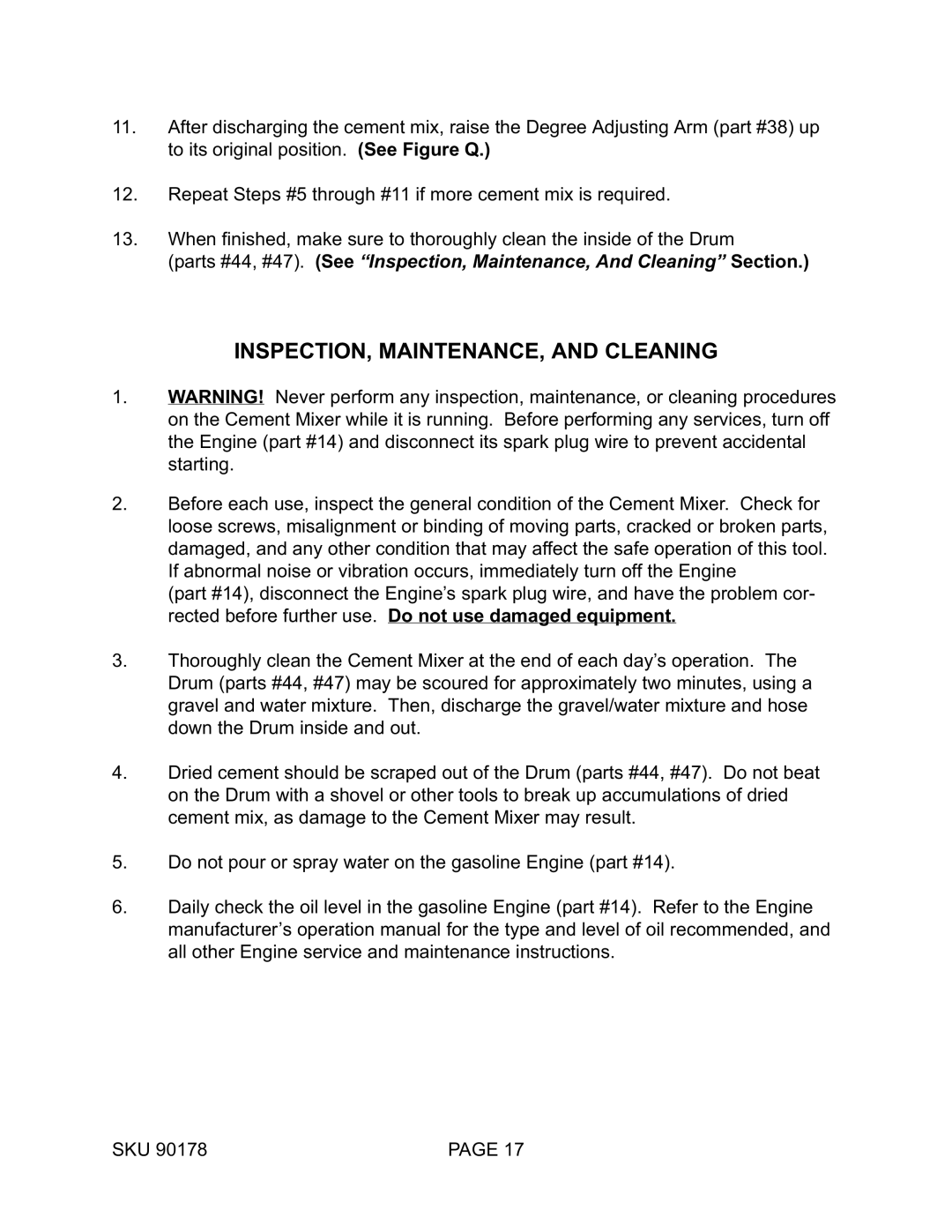11.After discharging the cement mix, raise the Degree Adjusting Arm (part #38) up to its original position. (See Figure Q.)
12.Repeat Steps #5 through #11 if more cement mix is required.
13.When finished, make sure to thoroughly clean the inside of the Drum
(parts #44, #47). (See “Inspection, Maintenance, And Cleaning” Section.)
INSPECTION, MAINTENANCE, AND CLEANING
1.WARNING! Never perform any inspection, maintenance, or cleaning procedures on the Cement Mixer while it is running. Before performing any services, turn off the Engine (part #14) and disconnect its spark plug wire to prevent accidental starting.
2.Before each use, inspect the general condition of the Cement Mixer. Check for loose screws, misalignment or binding of moving parts, cracked or broken parts, damaged, and any other condition that may affect the safe operation of this tool. If abnormal noise or vibration occurs, immediately turn off the Engine
(part #14), disconnect the Engine’s spark plug wire, and have the problem cor- rected before further use. Do not use damaged equipment.
3.Thoroughly clean the Cement Mixer at the end of each day’s operation. The Drum (parts #44, #47) may be scoured for approximately two minutes, using a gravel and water mixture. Then, discharge the gravel/water mixture and hose down the Drum inside and out.
4.Dried cement should be scraped out of the Drum (parts #44, #47). Do not beat on the Drum with a shovel or other tools to break up accumulations of dried cement mix, as damage to the Cement Mixer may result.
5.Do not pour or spray water on the gasoline Engine (part #14).
6.Daily check the oil level in the gasoline Engine (part #14). Refer to the Engine manufacturer’s operation manual for the type and level of oil recommended, and all other Engine service and maintenance instructions.
SKU 90178 | PAGE 17 |
